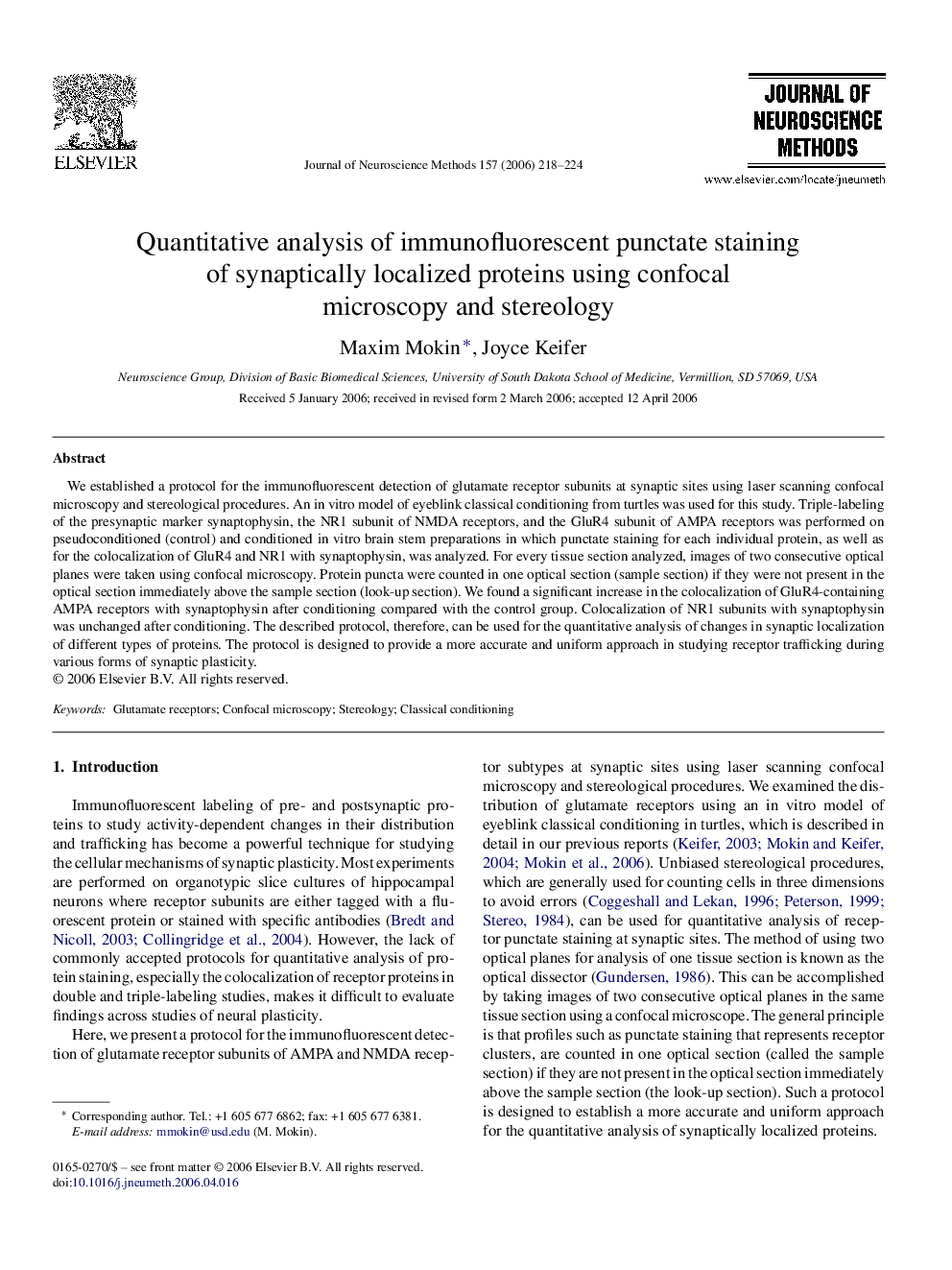| Article ID | Journal | Published Year | Pages | File Type |
|---|---|---|---|---|
| 4336989 | Journal of Neuroscience Methods | 2006 | 7 Pages |
We established a protocol for the immunofluorescent detection of glutamate receptor subunits at synaptic sites using laser scanning confocal microscopy and stereological procedures. An in vitro model of eyeblink classical conditioning from turtles was used for this study. Triple-labeling of the presynaptic marker synaptophysin, the NR1 subunit of NMDA receptors, and the GluR4 subunit of AMPA receptors was performed on pseudoconditioned (control) and conditioned in vitro brain stem preparations in which punctate staining for each individual protein, as well as for the colocalization of GluR4 and NR1 with synaptophysin, was analyzed. For every tissue section analyzed, images of two consecutive optical planes were taken using confocal microscopy. Protein puncta were counted in one optical section (sample section) if they were not present in the optical section immediately above the sample section (look-up section). We found a significant increase in the colocalization of GluR4-containing AMPA receptors with synaptophysin after conditioning compared with the control group. Colocalization of NR1 subunits with synaptophysin was unchanged after conditioning. The described protocol, therefore, can be used for the quantitative analysis of changes in synaptic localization of different types of proteins. The protocol is designed to provide a more accurate and uniform approach in studying receptor trafficking during various forms of synaptic plasticity.
